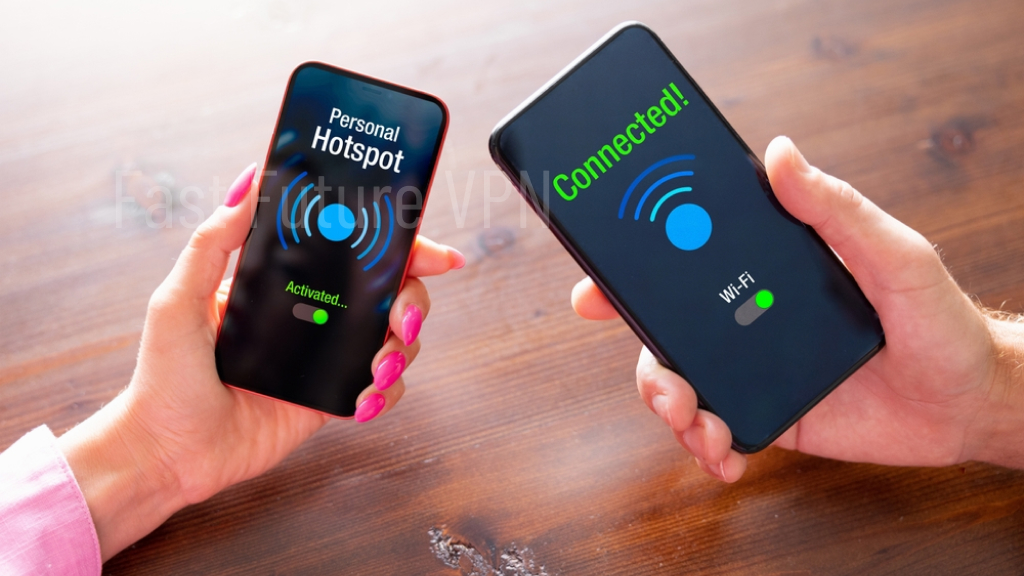
Hotspots have become an integral part of our mobile computing experience. These tiny devices, also known as wireless access points, provide a convenient way to connect our smartphones, tablets, laptops, and other wireless devices to the internet while on the go. But what exactly is a hotspot? In simple terms, a hotspot is a location with a wireless network that allows devices to connect to the internet. This article will delve into the definition and meaning of a hotspot and discuss its workings in detail. By the end of this section, you will have a clear understanding of what hotspots are and how they function.
Understanding Hotspot Usage and Benefits

Hotspots offer numerous benefits for individuals and businesses alike. They are versatile and convenient, making them a popular choice among users.
Versatility
Hotspots allow users to connect multiple devices to the internet simultaneously, making them an ideal option for families, friends, and colleagues. They also offer flexibility, allowing users to switch between different devices, such as laptops, smartphones, and tablets, without the need for additional configuration.
Convenience
Hotspots provide internet connectivity on the go and are an excellent choice for individuals who are frequently on the move or traveling. They eliminate the need to search for WiFi hotspots or rely on expensive data roaming, providing seamless connectivity wherever you go.
Features
Hotspot features vary depending on the device or provider. Some popular features include long battery life, fast internet speeds, and easy-to-use interfaces. With so many options available, users can find a hotspot that fits their specific needs and preferences.
Usage Scenarios
Individuals and businesses can utilize hotspots in a variety of ways to enhance productivity and stay connected:
- Telecommuting: Hotspots enable remote workers to access data and collaborate with colleagues from anywhere.
- Travel: Hotspots eliminate the need to search for WiFi hotspots or incur expensive data roaming charges while traveling.
- Events: Hotspots can provide temporary internet connections for events, such as conferences or exhibitions.
- Emergency Backup: Hotspots can serve as a backup internet connection when primary networks fail.
Overall, hotspots are a versatile, convenient, and feature-rich option for internet connectivity. Understanding their benefits and how to use them effectively can be a game-changer for users seeking reliable and seamless internet on the go.
Hotspot vs. WiFi: Understanding the Difference
In today’s digital age, staying connected to the internet is no longer restricted to traditional WiFi networks. Hotspots have emerged as an alternative solution, offering users the convenience of internet access on the go. But what exactly is the difference between hotspots and WiFi, and when would one be more suitable than the other?
Firstly, let’s define what they are. A hotspot is a wireless access point that creates a local network, allowing users to connect their devices wirelessly and access the internet. It can be created using a smartphone, dedicated portable hotspot device, or even a laptop. On the other hand, WiFi refers to wireless connectivity that is typically offered through a network router or modem. It is commonly used in homes, offices, and public places such as cafes and airports.
When it comes to range, WiFi networks are generally more extensive than hotspots, providing broader coverage for a larger area. Hotspots, however, have the advantage when it comes to mobility and convenience, as they can be created anywhere with cellular coverage and be taken with you wherever you go.
In terms of speed, WiFi networks are known for their faster speeds and uninterrupted connections. Hotspots, while convenient, may be slower in comparison due to the reliance on mobile network coverage. This can be especially true in areas with poor reception or during busy periods when networks become congested.
So when would you choose one over the other? If you’re working from home or in an office, WiFi is likely the better option, as it provides faster, more reliable speeds and can support multiple devices at once. A hotspot, on the other hand, is excellent for those always on the move, providing a quick and easy way to connect to the internet when away from traditional WiFi networks.
In conclusion, hotspots and WiFi networks both have their unique advantages and disadvantages. Understanding the differences between them and when to use one over the other is essential for staying connected in today’s fast-paced, mobile world.
Setting Up a Hotspot: A Step-by-Step Guide
Hotspots are ideal for anyone seeking an instant internet connection without the need for cables or routers. In this section, we have provided a comprehensive guide on how to set up a hotspot on various devices, including smartphones, laptops, and dedicated portable hotspot devices.
Setting up a Hotspot on Android
- Open your phone’s settings and select “Network & internet.”
- Select “Hotspot & tethering.”
- Toggle on “Portable Wi-Fi hotspot.”
- Edit the hotspot name and password, if necessary.
- Connect to the hotspot from another device.
Setting up a Hotspot on iOS
- Open the settings app and tap “Personal Hotspot.”
- Toggle on “Allow Others to Join.”
- Edit the Wi-Fi password, if necessary.
- Connect to the hotspot from another device using Wi-Fi, Bluetooth, or USB.
Setting up a Portable Hotspot Device
- Turn on the device and follow the manufacturer’s instructions to access the main menu.
- Select the option to create a hotspot.
- Edit the hotspot name and password, if necessary.
- Connect to the hotspot from another device.
By following these simple steps, you can create your own hotspot and enjoy wireless connectivity on the go.
Hotspot Security: Tips for Protecting Your Connection
Using hotspots in public places has become increasingly common, but it also comes with security risks. As hotspots transmit data over public networks, protecting your connection is essential for safeguarding your personal information. Here are some essential tips for enhancing hotspot security:
Create a Strong Password
The first step to securing your hotspot is creating a strong password that is unique and hard to guess. Avoid using simple or easily guessable passwords, such as “password123.” Instead, use a combination of upper and lowercase letters, numbers, and special characters to create a strong password.
Enable Encryption
Encryption is a crucial feature that ensures data transmitted over the network is secure. Make sure your hotspot has encryption enabled, such as WPA2. This will protect your information from anyone attempting to intercept your data.
Be Vigilant of Potential Threats
When using hotspots in public places, it is essential to be aware of potential threats and take precautions. Avoid accessing sensitive information, such as banking details or personal data, over a public network. Additionally, be cautious of suspicious activity and keep an eye out for potential security breaches.
Use a Virtual Private Network (VPN)
A VPN is an additional layer of security that encrypts your data and keeps your online activities private. Consider using a VPN to protect your hotspot connection and prevent unauthorized access to your data.
By following these hotspot security tips, you can ensure your personal information remains safe and your hotspot connection is secure.
Conclusion
In conclusion, the convenience and versatility of hotspots make them a popular choice for internet connectivity on the go. By understanding the benefits of using a hotspot and how to set it up securely, users can stay connected and productive outside of traditional WiFi networks.
While hotspots offer numerous benefits, it’s still crucial to prioritize security measures to protect personal information and safeguard against potential threats. Utilizing strong passwords, enabling encryption, and being vigilant while using public networks are essential safeguards to keep in mind.
Overall, hotspots are a valuable tool for those frequently on the move and wanting reliable internet connectivity. By following the tips provided, users can ensure their hotspot usage remains safe and secure.
FAQ
What is a hotspot?
A hotspot is a wireless access point that allows devices to connect to the internet using cellular data networks. It serves as a portable internet connection, enabling users to access the internet on their smartphones, laptops, or other devices outside of traditional WiFi networks.
How does a hotspot work?
A hotspot works by utilizing cellular data networks to create a wireless internet connection. It connects to the internet through a mobile network provider and broadcasts a WiFi signal that devices can connect to. When a device is connected to a hotspot, it can access the internet and perform various online activities, such as browsing the web, streaming videos, or downloading files.
What are the benefits of using a hotspot?
Using a hotspot offers several benefits. Firstly, it provides internet access on the go, allowing users to stay connected while traveling or in areas without WiFi coverage. Hotspots also offer convenience by eliminating the need to find and connect to public WiFi networks. Additionally, hotspots are versatile and can support multiple devices, making them suitable for individuals, families, or businesses looking to connect multiple devices simultaneously.
What is the difference between a hotspot and WiFi?
While both hotspots and WiFi provide wireless internet connectivity, there are some key differences between the two. A hotspot creates a localized WiFi network using cellular data, while WiFi relies on a fixed broadband connection. Hotspots are portable and can be used anywhere with cellular coverage, whereas WiFi is limited to specific locations. Hotspots also have data limitations based on the user’s mobile data plan, while WiFi connections typically have unlimited data usage.
How do I set up a hotspot?
Setting up a hotspot is relatively simple. On most smartphones, you can access the hotspot settings through the device’s settings menu and enable the hotspot feature. You can then choose a name and password for your hotspot network. For laptops and dedicated portable hotspot devices, the setup process may vary but usually involves accessing the device’s settings or control panel and configuring the hotspot network settings.
What are some hotspot security tips?
To ensure the security of your hotspot connection, follow these tips: – Enable password protection for your hotspot network to prevent unauthorized access. – Use a strong password that includes a combination of upper and lower case letters, numbers, and special characters. – Enable encryption, such as WPA2, for your hotspot network to secure the data transmitted between devices. – Avoid accessing sensitive or personal information while connected to public hotspots. – Regularly update the firmware and software of your hotspot device to protect against security vulnerabilities.




